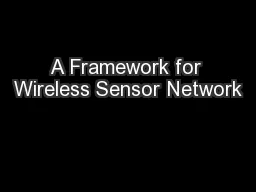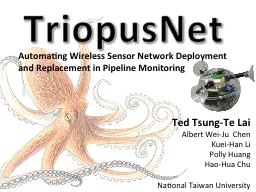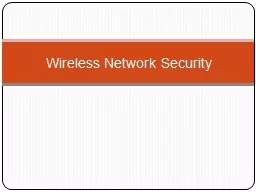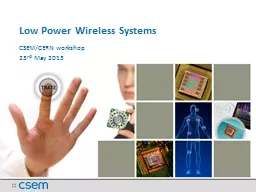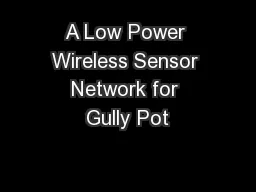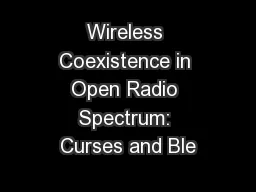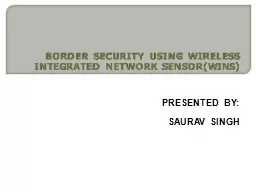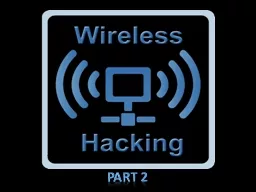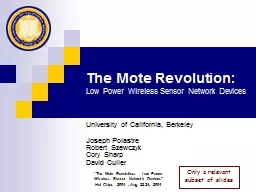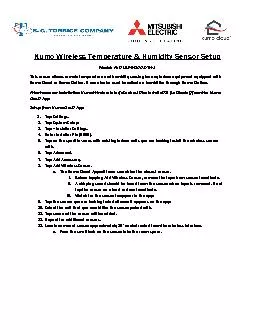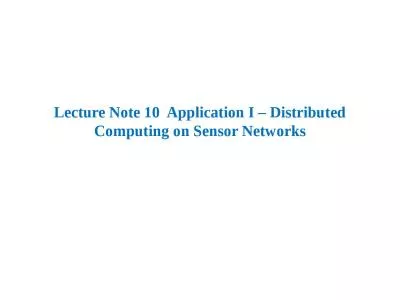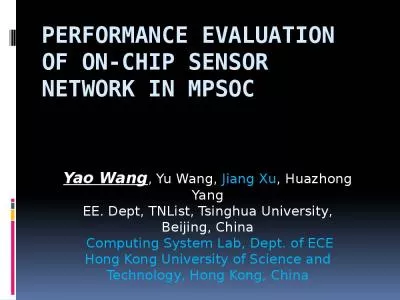PPT-A Framework for Wireless Sensor Network
Author : lois-ondreau | Published Date : 2018-10-31
Security Babak D Beheshti Professor amp Associate Dean School of Engineering amp Computing Sciences New York Institute of Technology Old Westbury NY USA Presenter
Presentation Embed Code
Download Presentation
Download Presentation The PPT/PDF document "A Framework for Wireless Sensor Network" is the property of its rightful owner. Permission is granted to download and print the materials on this website for personal, non-commercial use only, and to display it on your personal computer provided you do not modify the materials and that you retain all copyright notices contained in the materials. By downloading content from our website, you accept the terms of this agreement.
A Framework for Wireless Sensor Network: Transcript
Download Rules Of Document
"A Framework for Wireless Sensor Network"The content belongs to its owner. You may download and print it for personal use, without modification, and keep all copyright notices. By downloading, you agree to these terms.
Related Documents

